
SK-460-009 1 I56-3443-000
INSTALLATION AND MAINTENANCE INSTRUCTIONS
I56-3443-000
7550 Meridian Circle, Maple Grove, MN 55369-4927
763.493.6455, 800.328.0103; Fax: 763.493.6475
http://www.silentknight.com
SK-Mon-10 Ten Input Monitor Module
SPECIFICATIONS
Normal Operating Voltage: 15-32 VDC
Stand-By Current: 3.5 mA
Alarm Current: 55 mA (assumes all ten LEDs solid on)
Temperature Range: 32°F to 120°F (0°C to 49°C)
Humidity: 10 to 93% Non-condensing
Dimensions: 6.8˝ H x 5.8˝ W x 1.25˝ D
Accessories: IDP-ACB Cabinet and Chassis
Wire Gauge: 12-18 AWG
Maximum IDC
Wiring Resistance: 1500 Ohms
Maximum IDC Voltage: 10.2 VDC
Maximum IDC Current: 240 µA (each circuit)
BEFORE INSTALLING
If the modules will be installed in an existing operational system, inform the
operator and local authority that the system will be temporarily out of service.
Disconnect the power to the control panel before installing the modules. This
system contains static sensitive components. Always ground yourself with a
proper wrist strap before handling any circuits so that static charges are re-
moved from the body. The housing cabinet should be metallic and suitably
grounded.
NOTICE: This manual should be left with the owner/user of this equipment.
GENERAL DESCRIPTION
The SK-Mon-10 Ten Input Monitor Module is intended for use in an intelligent
alarm system. Each monitor module is intended to interface between a control
panel and normally open contact devices, such as pull stations. A common
SLC input is used for all modules, and the initiating device loops share a
common supervisory supply and ground. Otherwise, each monitor operates
independently from the others. Each module has its own unique address.
A pair of rotary code switches is used to set the address of the first mod-
ule from 01 to 150 (01 to 90 on panels that support up to 99 addresses).
The remaining modules are automatically assigned to the next nine higher
addresses. Provisions are included for disabling a maximum of two unused
modules to release the addresses to be used elsewhere. Each module also has
panel controlled green LED indicators. The panel can cause the LEDs to blink,
latch on, or latch off.
C0202-00
ShIPPED ON BOARD:
(1) Shunt in Class A/B position
(Shipped in Class B position, remove shunt for Class A)
INCLUDED:
(6) 1 x 4 Terminal Blocks (2) 1
1
/4˝ (32mm) Stand offs
(4) Machine Screws (3) Shunts (10) 47k Ohm
End of Line Resistors
(2) Nuts
COMPATIBILITY REQUIREMENTS
To ensure proper operation, this module shall be connected to a compatible
Silent Knight system control panel.
COMPONENTS
The following is a description of the SK-Mon-10 mounting framework:
One or two SK-Mon-10 modules can be installed in an IDP-ACB cabi-•
net.
The IDP-ACB cabinet has a built-in chassis that will accommodate one or two
SK-Mon-10 modules.
0
1
2
3
4
5
6
7
8
9
0
7
8
6
5
4
3
2
1
9
10
11
12
13
14
15
BASE ADDRESS
ADDRESS
DISABLE
0
1
2
3
4
5
6
7
8
9
0
7
8
6
5
4
3
2
1
9
BASE ADDRESS
ADDRESS
DISABLE
10
11
12
13
14
15
C0234-05
FIGURE 1: IDP-ACB CABINET
The front SK-Mon-10 module positions of each chassis are offset below the
rear SK-Mon-10 module positions so that all of the status indicators are visible.
For cabinet dimensions refer to the IDP-ACB instruction manual.

SK-460-009 2 I56-3443-000
INSTALLATION STEPS
1. Cabinet Mounting
In a clean, dry area, mount the backbox using the four holes pro-
vided in the back surface of the cabinet (Figure 2).
2. Module Installation
There are two methods for installing a module in the rear position
of a chassis. Method one is for installation of a rear module only,
when no module will be installed in front of it. Refer to Figure 3 for
instructions. Method two is for installation of a rear module when
another module will be installed in the chassis position in front of
it. Refer to Figures 4a and 4b for method two. All necessary screws
and standoffs are supplied with the modules.
C0237-00
FIGURE 3: INSTALLATION OF REAR MODULE ONLY, METhOD ONE
2
3
1
Step 1: Insert the bottom edge of the SK-Mon-10 module down into a rear
slot of the chassis.
Step 2: Carefully swing the upper edge of the board towards the back of the
chassis until it touches the short standoff attached to the chassis.
Step 3: Align the long standoff with the short stand off and tighten.
FIGURE 4A: INSTALLATION OF SK-MON-10 MODULE IN A REAR ChAS-
SIS POSITION, METhOD TwO
1
2
3
1
FIGURE 4B: INSTALLATION OF SK-MON-10 MODULE IN FRONT ChAS-
SIS POSITION
Step 1: Insert the bottom edge of the SK-Mon-10 module down into a front
slot of the chassis.
Step 2: Carefully swing the upper edge of the board towards the back of the
chassis until it touches the 11⁄4˝ (31.75mm) standoffs installed on the
rear module.
Step 3: Align two 4-40 screws with the two standoffs and tighten.
Step 4: Address and wire the modules according to the instructions in this
manual.
wIRING
NOTE: All wiring must conform to applicable local codes, ordinances, and
regulations.
1. Install module wiring in accordance with the job drawings and appropri-
ate wiring diagrams.
2. All wiring to the SK-Mon-10 is done via terminal blocks. In order to prop-
erly make electrical connections strip approximately 1⁄4˝ of insulation
from the end of wire, sliding the bare end of the wire under the clamping
plate screw.
3. Set the address on the modules per the job drawing. Use the rotary code
switches to set the address of the first module between 01 and 90 (or 01
and 150 for panels that support 159 addresses).
In Class B operation, the remaining modules are automati
cally assigned to the next nine higher addresses. For example, if the base ad-
dress switch is set to 28, the next nine modules will be addressed to 29, 30, 31,
32, 33, 34, 35, 36, and 37.
The module is shipped in Class B position, remove shunt for Class A.
When operating in Class A, alternate modules are paired together (+0/+1,
+2/+3, +4/+5, +6/+7, +8/+9), resulting in a total of five modules. For
example, if the base address switch is set to 28, then 30, 32, 34 and 36 will be
automatically assigned to the modules while 29, 31, 33, 35 and 37 are avail-
able to be used for other modules on the SLC. For Class A and B operation,
DO NOT set the lowest address above 90 (or 150 for panels that support 159
addresses), as the other modules will be assigned to nonexistent addresses.
NOTE: The SK-Mon-10 must have power cycled for shunt changes to take ef-
fect.
4. A shunt is provided to disable a maximum of two unused modules in
Class B operation and one unused module in Class A operation. Modules
are disabled from the highest address and work downward. If two mod-
ules are disabled, the lowest eight addresses will be functional, while the
highest two will be disabled. For example, in Class B operation, if the
shunt for Address Disable is placed on “two” and the base switch is set
to 28, the modules will be assigned to 28, 29, 30, 31, 32, 33, 34 and 35
while disabling the highest two positions.
5. A communications loss feature is available on some panels. Upon a com-
munication loss, due to a microprocessor failure at the control unit, the
SK-Mon-10 will send a signal to the control unit to activate the notifica-
tion device circuits upon initiating of an alarm on the SK-Mon-10. A sin-
gle shunt is used to enable (shunt on) or disable (shunt off) this feature
for all modules on the board.
NOTE: Place unused shunts on single pin to store on board for future use.
wIRING NOTES
Power-limited circuits must employ type FPL, FPLR, or FPLP cable as •
required by Article 760 of the NEC.
PROGRAMMING
The modules are programmed as devices in each system according to the pro-
gramming instructions in the appropriate FACP manual.
C0225-00
C0226-00
BACKBOX
MOUNTING
HOLES
C0235-00
FIGURE 2: TYPICAL MOUNTING hOLE LOCATIONS
Step 1: Insert the bottom of the SK-Mon-10 module down into a rear slot on
the chassis.
Step 2: Carefully swing the upper edge of the board back towards the back of
the chassis until it touches the two standoffs.
Step 3: Align two 4-40 screws with the two standoffs and tighten.
Step 4: Address and wire the modules according to the instructions in this
manual.
The steps in Figures 4a and 4b describe and illustrate module in-
stallation when the rear chassis position and the position in front
of it will be filled. Front position installation is possible only if the
rear position is filled with a module.

SK-460-009 3 I56-3443-000
©2009 Silent Knight
FCC STATEMENT
This device complies with part 15 of the FCC Rules. Operation is subject to the following two conditions: (1) This device may not cause harmful interference, and (2) this device must
accept any interference received, including interference that may cause undesired operation.
NOTE: This equipment has been tested and found to comply with the limits for a Class B digital device, pursuant to Part 15 of the FCC Rules. These limits are designed to provide
reasonable protection against harmful interference in a residential installation. This equipment generates, uses and can radiate radio frequency energy and, if not installed and used
in accordance with the instructions, may cause harmful interference to radio communications. However, there is no guarantee that interference will not occur in a particular installa-
tion. If this equipment does cause harmful interference to radio or television reception, which can be determined by turning the equipment off and on, the user is encouraged to try
to correct the interference by one or more of the following measures:
– Reorient or relocate the receiving antenna.
– Increase the separation between the equipment and receiver.
– Connect the equipment into an outlet on a circuit different from that to which the receiver is connected.
– Consult the dealer or an experienced radio/TV technician for help.
0
1
2
3
4
5
6
7
8
9
BASE ADDRESS
TO NEXT
DEVICE
–
STATUS
INDICATORS
—
+
—
+
—
+
—
+
—
+
—
+
IDC
ADDRESS
+0
+1
+2
+3
+4
+5
+6
+7
+8
+9
IDC
ADDRESS
IDC
ADDRESS
IDC
ADDRESS
IDC
ADDRESS
—
+
—
+
SLC
—
+
—
+
+
–
+
FROM PANEL OR
PREVIOUS DEVICE
47K
EOL
RESISTOR
ELR-47K
CONNECT MODULES TO
LISTED COMPATIBLE
SILENT KNIGHT CONTROL
PANELS ONLY
SIGNAL LINE CIRCUIT (SLC) 32 VDC MAX.
SEE PANEL INSTRUCTION MANUAL
FOR WIRE REQUIREMENTS.
CLASS B IDC (TYPICAL)
—
+
—
+
A/B SLCT
COM LOSS
DISABLE 1
DISABLE 2
0
1
2
3
4
5
6
7
8
9
10
1 1
12
13
14
15
POWER LIMITED
AND SUPERVISED
NOTE: Any number of UL listed contact closure devices may be used. DO
NOT mix fire alarm initiating and supervisory devices on the same initiating
device circuit. Install contact closure devices per manufacturer’s installation
instructions.
C0810-02
FIGURE 5: TYPICAL INITIATING DEvICE CIRCUIT CONFIGURATION – CLASS B, STYLE B.
BASE ADDRESS
TO NEXT
DEVICE
–
STATUS
INDICATORS
—
+
—
+
—
+
—
+
—
+
—
+
IDC
ADDRESS
+0
+1
+2
+3
+4
+5
+6
+7
+8
+9
IDC
ADDRESS
IDC
ADDRESS
IDC
ADDRESS
IDC
ADDRESS
—
+
—
+
SLC
—
+
—
+
+
–
+
FROM PANEL OR
PREVIOUS DEVICE
CONNECT MODULES TO
LISTED COMPATIBLE
SILENT KNIGHT CONTROL
PANELS ONLY
SIGNAL LINE CIRCUIT (SLC) 32 VDC MAX.
SEE PANEL INSTRUCTION MANUAL
FOR WIRE REQUIREMENTS.
CLASS A IDC (TYPICAL)
—
+
—
+
A/B SLCT
COM LOSS
DISABLE 1
DISABLE 2
IDC 2
IDC 3
IDC 4
IDC 5
0
1
2
3
4
5
6
7
8
9
0
1
2
3
4
5
6
7
8
9
10
1 1
12
13
14
15
POWER LIMITED
AND SUPERVISED
REMOVE SHUNT FOR CLASS A.
FIGURE 6: TYPICAL FAULT TOLERANT INITIATING DEvICE CIRCUIT CONFIGURATION – CLASS A, STYLE D
NOTE: Any number of UL listed contact closure devices may be
used. DO NOT mix fire alarm initiating and supervisory devices on the
same initiating device circuit. Install contact closure devices per manu-
facturer’s installation instructions.
C0811-02
-
 1
1
-
 2
2
-
 3
3
SILENT KNIGHT SK-Mon-10 Addressable Ten Input Monitor Module User manual
- Type
- User manual
- This manual is also suitable for
Ask a question and I''ll find the answer in the document
Finding information in a document is now easier with AI
Related papers
-
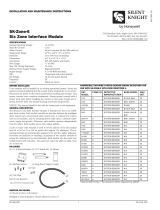 SILENT KNIGHT SK-Zone-6 Addressable Six Zone Interface Module User manual
SILENT KNIGHT SK-Zone-6 Addressable Six Zone Interface Module User manual
-
 SILENT KNIGHT ISO-6 - Six Fault Isolator Module User manual
SILENT KNIGHT ISO-6 - Six Fault Isolator Module User manual
-
SILENT KNIGHT SK-Control-6 Six Circuit Notification Module User manual
-
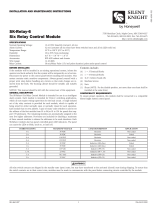 SILENT KNIGHT SK-Relay-6 Addressable Six Relay Module User manual
SILENT KNIGHT SK-Relay-6 Addressable Six Relay Module User manual
-
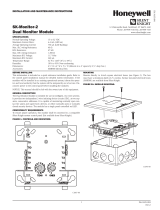 SILENT KNIGHT SK-Monitor-2 Addressable Dual Input Monitor Module User manual
SILENT KNIGHT SK-Monitor-2 Addressable Dual Input Monitor Module User manual
-
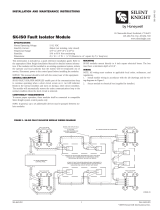 SILENT KNIGHT SK-Iso Line Isolator Module User manual
SILENT KNIGHT SK-Iso Line Isolator Module User manual
-
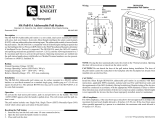 SILENT KNIGHT SK-Pull-DA Addressable Dual Action Pull Station User manual
SILENT KNIGHT SK-Pull-DA Addressable Dual Action Pull Station User manual
-
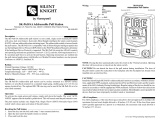 SILENT KNIGHT SK-Pull-SA Addressable Single Action Pull Station User manual
SILENT KNIGHT SK-Pull-SA Addressable Single Action Pull Station User manual
-
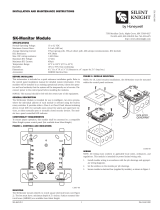 SILENT KNIGHT SK-Monitor Addressable Input Monitor Module User manual
SILENT KNIGHT SK-Monitor Addressable Input Monitor Module User manual
-
 SILENT KNIGHT SK-2 and SK-4 Conventional FACP 2 & 4 Zone User manual
SILENT KNIGHT SK-2 and SK-4 Conventional FACP 2 & 4 Zone User manual
Other documents
-
System Sensor IM-10 User manual
-
System Sensor ISO-6 User manual
-
Honeywell IDP-ACB Cabinet Operating instructions
-
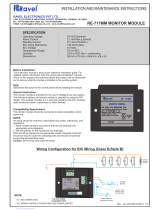 Ravel RE-717MM Installation And Maintenance Instructions
Ravel RE-717MM Installation And Maintenance Instructions
-
System Sensor CZ-6 User manual
-
Bel Air Lighting MDN-1514 Installation guide
-
Perle IDPS-48-240-XT Installation guide
-
Notifier AFP-200 Installation guide
-
Johnson Controls IFC-3030 Wiring Manual
-
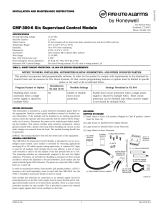 Fire-Lite CMF-300-6 Installation And Maintenance Instructions Manual
Fire-Lite CMF-300-6 Installation And Maintenance Instructions Manual













